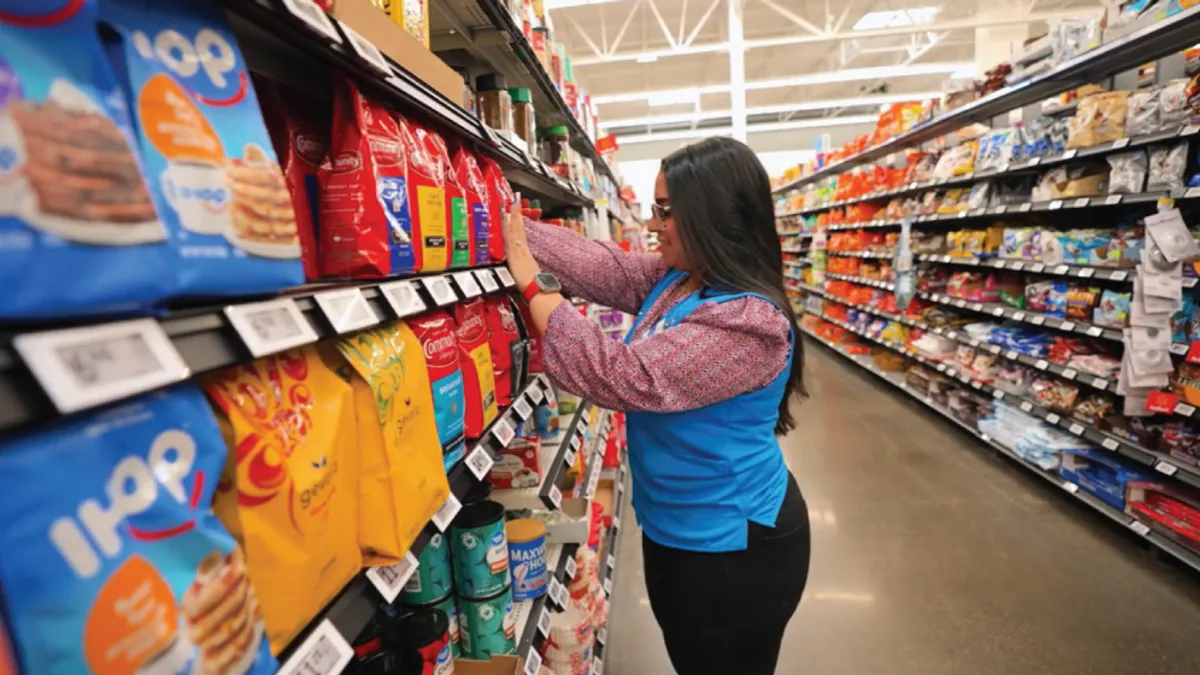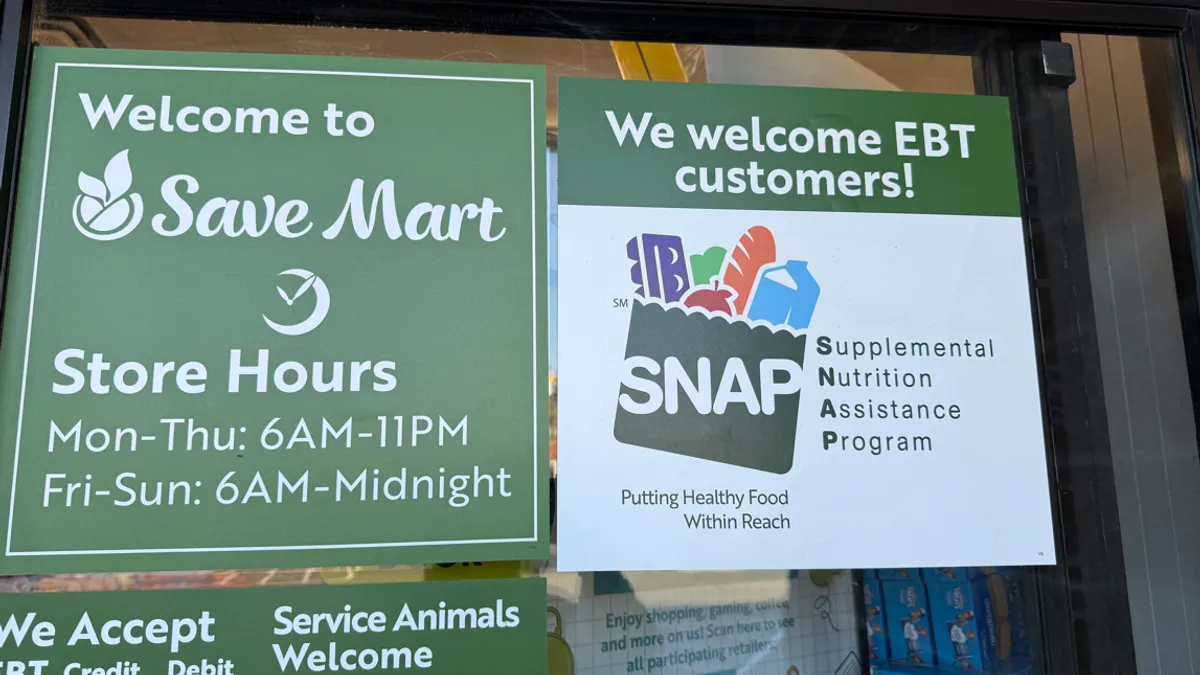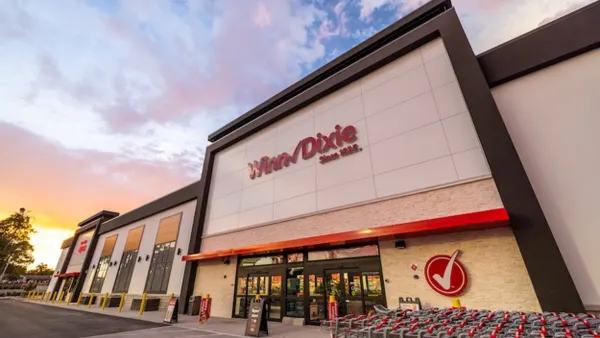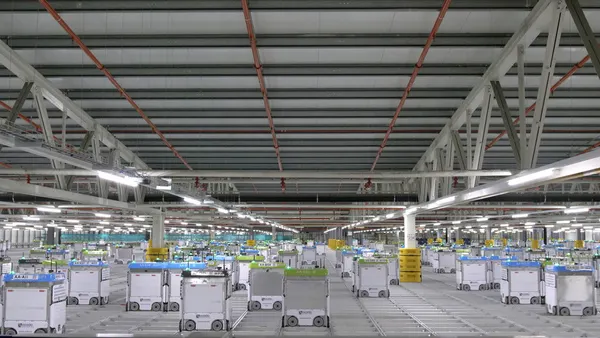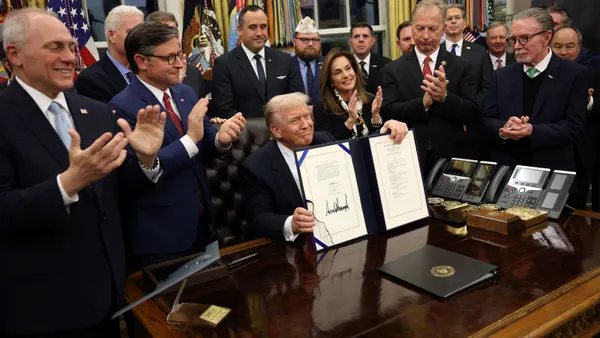Dive Brief:
- Walmart’s U.S. comparable-store sales excluding fuel rose 4.5% during the first quarter of fiscal year 2026, driven by growth in food, e-commerce, and health and wellness sales, the retailer reported Thursday morning.
- Walmart achieved e-commerce profitability in the U.S. for the first time in Q1 as fulfillment costs continued to decline, CFO John David Rainey said during a Thursday earnings call. The company's digital sales stateside grew 21% during the quarter.
- As tariffs push up the costs of goods, Walmart is focused on keeping food prices “as low as we can,” especially as U.S. consumers have grappled with higher grocery bills in recent years, Walmart President and CEO Doug McMillon told investors.
Dive Insight:
Walmart wants to keep food prices as low as possible for its millions of price-sensitive shoppers, but tariffs are putting pressure on everyday grocery items, McMillon noted.
“We won’t let tariff-related cost pressure on some general merchandise items put pressure on food prices. But as it relates to food, tariffs on countries like Costa Rica, Peru and Colombia are pressuring imported items like bananas, avocados, coffee and roses,” McMillon said.
McMillon told investors that tariff impacts pose an “immediate challenge” for the retailer to navigate.
“We will do our best to keep our prices as low as possible, but given the magnitude of the tariffs, even at the reduced levels announced this week, we aren’t able to absorb all the pressure,” McMillon said.
Walmart’s Q1 comp-sales growth was slightly lower than the prior two quarters, but higher than a year ago
In the U.S., the retailer’s grocery segment saw mid-single-digit growth driven by increased transactions, units and share gains during Q1. Walmart U.S. recorded broad-based sales strength across food categories included dairy, pantry products and fresh foods, as well as strong e-commerce growth in grocery.
The costs of e-commerce have declined as the company densifies its last-mile deliveries and as customers pay fees for faster delivery, Rainey said. In the U.S., the number of Walmart deliveries completed in less than three hours grew by 91% for Q1 compared to the same time a year ago, McMillon said.
E-commerce, digital marketplace sales, Walmart+ membership and advertising revenues are playing a key role in helping the retailer navigate financial pressures posed by tariffs and absorb increased costs, executives said.
Walmart recorded better-than-expected April results, particularly stateside, and the company is starting Q2 with a strong inventory, executives told investors. Depending on what happens with tariffs, the company’s financial results could swing from quarter to quarter. Walmart has modeled various scenarios related to the ongoing trade policy discussions, including how tariffs implemented at various levels would impact the company, Rainey said.
“We will know a lot more in a couple [of] months, but we are equipped to manage this as well — or better than — other retailers,” Rainey said.
Walmart will provide its full-year outlook at the end of Q2, Rainey said. Still, executives told investors it is confident the retailer can successfully navigate macroeconomic challenges.
“History tells us that when we lean into these times of economic uncertainty, we emerge on the other side as a stronger company,” Rainey said. “We expect this time to be no different.”
Peyton Bigora contributed reporting.


